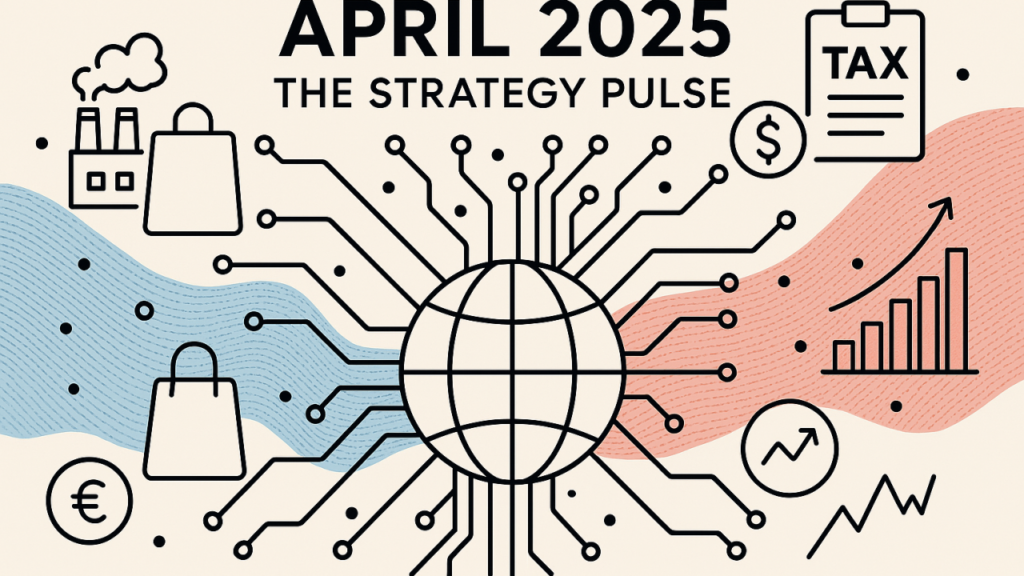Author: Rudy Fernando

Navigating self-doubt in the job search process
Navigating self-doubt in the job search process
October 13, 2022

Scrolling through a job board, your eyes light up as you stumble across an ad for your dream career opportunity. Five little words peek out at you from beneath the job title: your profile matches this job. You can feel yourself growing drunk on excitement but are cautious not to get carried away just yet. You’ve been down this road before, and you’re wary that a tripwire could rear its head at any moment, instantly sobering you up.
Alert and tense, you scan the job description with eagle eyes. Check, check, check. Your experiences and skills align near-perfectly with the job expectations listed. The stars are aligning. You edge slowly towards the apply button when all of a sudden, you’re stopped in your tracks. There it is, the dreaded roadblock on your path to success. In faint grey letters, yet somehow tauntingly glaring out at you, right above the apply button. Over 200 applicants.
And just like that, your confidence deflates like a week-old birthday balloon. You suddenly become aware that an army of hundreds of faceless robots is up against you. Your mind is instantly flooded with self-deprecating thoughts. That little voice in the back of your head begins its age-old tirade: they’re all just as qualified as you, if not more; they’re all more confident than you; they’re all more creative and intelligent than you. How could you possibly stand a chance?
Believe it or not, up to 85% of people suffer with feelings of self-doubt. According to a survey by Forbes, 6 out of 10 executive women most experienced imposter syndrome at times of pivotal change in their careers; whilst searching for a new role, for example. It can feel incredibly isolating, but it’s far more common than we think. Even the most seemingly confident among us are probably suffering from it in silence.
But what can we do to tackle these toxic and inhibiting thoughts?
Reach out to recruiters
Liberate yourself from the chains of the dreaded job board by getting in touch with recruiters specialising in your field. When working with recruiters, you no longer feel like a number buried at the bottom of a towering pile of anonymous applications. When you face the job search alone, simply floating your CV out into the abyss, this will instantly put you on the backfoot and make you feel pessimistic about your chances of succeeding.
Finding a recruiter that is a good match for you is a godsend when it comes to tackling self-doubt. Suddenly, the job search seems a little less daunting, as you’re treated like an individual, and the process of hunting for a job feels less cut-throat and more human.
A good recruiter will have a vested interest in you feeling your best throughout the job search. To an extent, they act as your cheerleader, instilling you with some much-needed confidence about your capabilities as they guide you through the job application process.
Don’t fear rejection
The belief that rejection is synonymous with failure seems to be entrenched in society, when in reality this couldn’t be further from the truth. It’s about time we changed that narrative.
It’s natural to experience that all-too-familiar sinking feeling when an email comes through from a hiring manager, starting with the classic refrain: thank you for applying. We regret to inform you…
However, this shouldn’t knock your confidence and make you doubt yourself. Rejection is a sign of determination. It’s better to apply for opportunities and get rejected, than simply sit on your hands and have nothing to show for it. Rejection shows that you’re putting yourself out there, and that takes a lot of courage.
Surround yourself with positivity
In order to overcome self-doubt, it’s crucial to immerse yourself in an environment brimming with positive energy. But there’s no hard-and fast rule stating what this looks like.
For some, following successful influencers on LinkedIn might be the answer, as their inspirational stories could serve as a source of motivation. For others, this might be the most detrimental move imaginable. It could set the wheels of a toxic cycle of comparison in motion, feeding into even more self-doubt. Ultimately, it comes down to personal preference, and you need to figure out what works for you. Your social media feed should be a positive space, not one that makes you feel bad about yourself. Filter out anything that makes you feel inferior or less worthy.
When cultivating a positive circle around you, it could be worth considering mentorship or coaching. This doesn’t mean you have to enlist the help of an expensive self-help coach; it could be as simple as messaging someone in your field that you look up to and seeking out their advice. There’s no shame in dropping them a line asking for their insights.
Optimistic self-talk
Negative self-talk has become far too normalised. Until we start being kinder to ourselves, self-doubt and imposter syndrome will continue to linger.
Whenever we put ourselves outside of our comfort zone, we risk exposing ourselves to damaging, self-deprecating thoughts. We’re genetically hard-wired to desire safety and security, so when we undergo big changes and face periods of uncertainty, our minds play out ‘worst-case’ scenarios as a defence mechanism, to guard against failure. However, this often spirals out of control and leads to catastrophising.
That little voice wriggles to the surface, spewing the same-old rhetoric: what if you get rejected; what if everyone judges you; what if you never succeed? For every what if that comes to mind, conjure up a so what? For every negative outlandish outcome, arm yourself with a counter-thought to keep self-doubt at bay.
Stop caring what others think
One of the main things that holds us back and limits our self-belief is the fear of judgement from others. Our minds are constantly abuzz with worry about how we are perceived by our colleagues, bosses and friends.
We fear the prospect of people seeing us fail. That familiar internal voice creeps up on you like clockwork: it’s embarrassing, you’ll look silly. People will think you aren’t any good at what you do.
We shouldn’t let the opinions of others damage our self-belief. Do things for yourself, and don’t preoccupy yourself with how it comes across to outsiders if things don’t go exactly to plan straight away. Ultimately, you’re taking proactive steps to change your life for the better, and in the long run this will pay off. Better to live a full life putting yourself out there and taking risks than live a half-life worrying about what other people think.

Data Digest #3: DNA Detectives and Hotel Hijacks
Data Digest #3: DNA Detectives and Hotel Hijacks
October 4, 2022

The cogs of the data world are perpetually turning. Data never sleeps. Brace yourself for an exciting overview into some of the top data news stories that have been gracing our screens over the past month.
The Telegraph: catching criminals via ancestry websites
Law enforcement professionals don’t simply give up on “cold cases”. They don’t put up their hands in surrender and admit defeat, leaving the files in a dark room in the corner of a police station to gather dust. Police are always investigating historical cases, in a bid to provide families with some long-overdue justice. And recently, a new technology has helped to crack the code on hundreds of unsolved crimes.
Investigative genetic genealogy uses DNA data alongside traditional genetic genealogy to uncover culprits who are yet to face repercussions for their actions. This technique garnered major media attention four years ago, when distant relatives of murderer and rapist Joseph DeAngelo posted their genetic data to the ancestry website GEDmatch, ultimately leading to his arrest.
IGG has been hailed by many as a breakthrough technological development. However, this technology is rife with ethicality concerns. Those using ancestry websites could never have imagined that their DNA data would end up putting someone they’re related to behind bars. Ultimately, consumers have raised valid concerns about the risk this technology poses of crossing the line. It’s also unlikely to have as much of an impact in the UK as in the US, where DNA databases are known to be more advanced.
The Telegraph: How police are using DNA from ancestry websites to catch murderers
The New York Times: Smartphone data predicts suicides?
Is it possible to predict suicide by using smartphone data? That’s exactly what a group of Harvard psychologists are trying to figure out. A research project currently underway is experimenting with new developments in AI and machine learning to gauge whether it’s possible to predict suicide and prevent it before it happens. Patients participating in the study are being monitored through their smartphones via biosensors, a GPS, questionnaires, etc. The information garnered from these different technologies is fed to researchers at the Harvard psychology department, who then decipher what it can reveal about the patient’s current mental state.
Researchers are keeping an eye out for an array of warning signs, such as the patient’s sleeping pattern or a worrying result on a mood questionnaire. If a patient is flagged as reporting unusual or worrying behaviour, indicating that they plan on hurting themselves, a researcher will get in touch with them via telephone call, and call 911 to attend to them.
With a plethora of data (quite literally) at our fingertips, it makes sense to be tapping into this resource by potentially saving lives. However, this kind of monitoring isn’t without its fair share of controversy. For one thing, it is undoubtedly impossible to predict every suicide in this way. It would be perfectly easy for a patient to mislead clinicians, simply by not being totally candid with their questionnaire answers. There’s also the very real risk of false positive results, which would lead to patients facing the trauma of an unwarranted intervention. And it’s also likely that a vast number of people experiencing suicidal thoughts would not be in the headspace to consent to this type of monitoring in the first place.
The New York Times: Can Smartphones Help Predict Suicide?
BBC: Hacking hotels
The Intercontinental Hotel Group were in for a nasty shock when they discovered that a Vietnamese couple had hacked into the company’s computer system. The couple proceeded to reach out to the BBC on the messaging app Telegram, holding up screenshots like victory trophies to prove that they had indeed gained access to the company’s Microsoft Teams server, as well as their internal Outlook emails.
The pair originally planned a ransomware attack, but when they realized that they had been stopped in their tracks, they went ahead and caused as much damage as they could anyway, purely out of spite. They proceeded to perform a wiper attack, which destroys data and documents, never to be retrieved again. Whilst they did not obtain any customer data, they did manage to get hold of some corporate data.
The hackers infiltrated the system via a misleading email attachment, that led to an employee downloading a deceptive piece of software. They were then able to make their way into the more private quarters of the computer system without much hassle. Why? Because of the absurdly easy and common password: Qwerty1234. The first password you’re warned against using in ICT lessons in primary school. It was equally surprising that 200,000 IHG employees had access to this sensitive content. This incident could serve as a reminder of the importance of putting a watertight security system in place, to protect against malicious attacks such as these.
BBC: IHG hack: ‘Vindictive’ couple deleted hotel chain data for fun
The Guardian: TikTok and children’s privacy
Following an investigation conducted by the Information Commissioner’s Office, TikTok has been issued with a ‘notice of intent’ regarding a potential breach of UK data protection law between May 2019 and July 2020. The app now could face a fine of £27 million. The ICG’s preliminary findings are that TikTok may have processed data belonging to children under the age of 13, without parental consent. As part of this alleged breach, TikTok may have exposed special category data, such as the children’s ethnicities and political opinions.
Whilst the investigation is still very much underway, TikTok representatives dispute the findings of the preliminary investigation thus far. The app is just one of over 50 other online services currently being investigated by the ICU, in a bid to assess whether they too are complying with child data protection laws. Meta also came under scrutiny this year, when they were fined £349 million for allowing teenagers to create online profiles that openly displayed their personal phone numbers. The world of data privacy is a minefield, and companies have a responsibility to protect the most vulnerable users of their online services.
The Guardian: TikTok could face £27m fine for failing to protect children’s privacy

Quiet Quitting: Cop-Out or Constructive?
Quiet Quitting: Cop-Out or Constructive?
September 26, 2022

In the not-too-distant past, many of us were caught up in the whirlwind of ‘hustle culture’. Perhaps the mere mention of those two little words triggers your fight or flight response, violently jolting you back into an era of 18-hour work days, and nights spent sleeplessly plotting your path to promotion. Work on the brain, 24/7. Like a flock of sheep, many of us marched in unison up the corporate ladder, petrified by the thought of falling out of line and getting trampled by the herd. The buzzwords #ambition, #grit and #grind stoked the fire of this toxic trend on social media.
Entrepreneurship, success, money, prestige. The golden medals that everyone was aching to win in the ‘hustle’ Olympics. LinkedIn profiles became glittering halls of fame, decked out with proudly displayed trophies. The focus was on carefully crafting a public persona of workaholism. It wasn’t enough to be successful. You had to create the impression that you were head-over-heels in love with your career. Drunk on ambition and adrenaline. Your whole identity revolved around it.
But recently, many people seem to be snapping out of this hypnotic spell. ‘Quiet quitting’ is a recent trend that pushes back against ‘hustle culture’. According to a Deloitte study in 2015, at the height of ‘hustle culture’, 77% of workers experienced burnout at work, and thus many are walking away from the toxic ‘hustle’ mindset. Whilst ‘hustle culture’ was born out of the Great Recession of 2008, ‘quiet quitting’ comes in the aftermath of a pandemic that has dragged on for years, leaving many people disillusioned with their work, or else simply determined to lead a life beyond it.
So, what exactly is ‘quiet quitting’? Is it a trend that employers need to be worried about, or is it not as bad as we think?
What is ‘quiet quitting’?
In a video that has now blown up on TikTok, a young man called Zaid Khan coined the term ‘quiet quitting’ to describe his changing attitude towards work. Despite the misleading name, ‘quiet quitting’ doesn’t actually involve quitting your job at all. It simply means doing the job you’re paid for, without going above and beyond.
‘Quiet quitting’ entails following your job description to the letter. Khan rejects the notion that consistent hustling should be the norm. It doesn’t involve neglecting your duties, but rather setting clear boundaries that you refuse to transgress. ‘Quiet quitters’ are resetting the standard, refusing to make work the centre of their universe. According to a Gallup survey, at least half of US workers are quiet quitting their jobs. Post-pandemic, the trend is particularly evident amongst young people.
Should we be worried?
Whilst there are many potential reasons why someone may choose to ‘quiet quit’ their job, a toxic workplace culture may very well be one of them. Employers may need to take a look in the mirror when asking themselves why employees are not pushing the boat out when it comes to work. Some argue that ‘quiet quitting’ is, by its very nature, semi-confrontational. It could be seen as a way for employees to register the frustration and disconnect they feel with the organisation they’re working for.
According to Gallup data, workers below the age of 35 in particular are growing disengaged at work. The percentage of engaged employees in this age group fell by 6 percent from 2019 to 2022. Meanwhile, the number of young employees who feel cared for by their employers, or think that they have opportunities to learn and grow professionally, fell by 10 percentage points. In this respect, ‘quiet quitting’ appears to be a way for employees to pushback against neglect from their employers. If employers aren’t investing in employee welfare, why should they be going above and beyond for the sake of a company that doesn’t care about them? If managers want a strong work ethic pulsing through the company, they need to find innovative ways to make employees feel looked after and engaged in the company mission. When someone feels like they’re a crucial piece of the puzzle – valuable, and part of something bigger – they’re more likely to be a proactive team player.
And being a team player can actually benefit them on a personal level, too. ‘Quiet quitting’ may not be as liberating for employees as it may seem at face-value. By swearing off any work that does not fall under your job description, you may actually be making your work more arduous and uninspiring than it needs to be. If you’re clocking off at 5pm on the dot and refusing to build relationships with colleagues, you could be killing any chances of cultivating a workplace community. You could be missing out on some of the most exciting and enriching parts of your working life if you refuse to truly immerse yourself in it.
If you’re unhappy in your career, is ‘quiet quitting’ really the answer? To many, it feels like an intrinsically hostile approach to take. A lot of critics regard it as a form of silent mutiny. If you’re not content with your job, perhaps it would be wiser and more beneficial for both parties to have a candid conversation with your employer, to discuss pain points and potentially find a solution. Or else, to look for a more inspiring role elsewhere.
Or is it even a thing?
However, all of this is to suggest that there’s a problem with ‘quiet quitting’ in the first place. Is there actually anything fundamentally wrong with simply doing your job?
The fact that ‘quiet quitting’ is proving to be such a shocking phenomenon to many – one that is making headlines – shows that society is still very much stuck in the ‘hustle culture’ mindset. It suggests that workers simply performing their job without doing additional work, just doing what they’re paid to do, is some kind of sin. In reality, should we be moving away from this unspoken societal rule that puts a pressure on the individual to push themselves to the brink in order to succeed professionally?
Whilst it’s very easy to suggest that someone simply quit their job and go down a career path that grips their interest more, this isn’t always possible. Many people aren’t in the privileged position to be able to up-sticks and leave their job in pursuit of something more enjoyable and personally fulfilling. In times of economic uncertainty, it may feel safer to stay on in a secure role and simply do what is expected of you rather than seek a job elsewhere. Not everyone has the opportunity to find a job that they’re passionate about.
Ultimately, what matters more than anything is the reasoning behind ‘quiet quitting’. It’s not always meant as a passive aggressive protest against working hard. Sometimes, it’s a way for employees to take back their personal power. ‘Quiet quitting’ isn’t inherently a bad thing. So long as employees are performing as expected there’s no reason that they shouldn’t be dedicating more time to their lives outside the office. In fact, it could actually be a good thing. Creating a healthy work-life balance can improve the quality of your work, whilst excessive stress and workplace pressure can be detrimental to the company as well as the individual.
The only time when ‘quiet quitting’ could be concerning is when there’s a truly spiteful sentiment fuelling it. In which case, it’s worth having a candid conversation to resolve whatever issue may be causing it. When an employee wants to take revenge on a company, or sees ‘quiet quitting’ as a way of flaunting their entitlement, it should be addressed, both for the sake of the individual and the business. However, in the vast majority of cases, ‘quiet quitting’ isn’t a problem at all. As long as it’s not being done for the wrong reasons, it’s just a means of establishing healthy boundaries and taking back the agency to find an identity beyond the office walls.

Red Flags in Job Ads
Red Flags in Job Ads
September 8, 2022

Online dating is a necessary evil in the world of modern romance. The vast majority of singletons in this day and age have resorted to dating apps at some point or another. You become trapped in a viscous cycle, as you redownload Hinge and Tinder out of boredom, swipe mindlessly for hours on end, muster up the energy to respond to a few uninspiring matches, before growing frustrated and deleting it all over again.
If this sounds like an eerily familiar experience, chances are you’re well-versed in spotting red flags in a potential suitor. When you spend long enough on the apps, you develop a kind of sixth sense, a superpower that instantly defends you against falling into a toxic relationship. You know, for example, to swipe left on a portfolio of exclusively shirtless selfies. You’re saving yourself a lot of time and energy in the long run.
But do you have the same level of vigilance when job hunting? Looking for a new career is similar to dating. You need to figure out if the company is a good match for you, and warning signs can rear their head as early as the initial application stages. Job postings may be rife with clues that inadvertently put you off applying, and it’s crucial that you know how to find them.
Don’t sell yourself short
It’s unsurprising that pay range is one of the first things candidates look for on a job ad. It’s the equivalent of that first photo on a dating profile; it’s the first impression that very quickly helps you decide whether to swipe right or left.
The pay range section of a job posting can very easily become a breeding ground for red flags. According to a recent survey by Paychex, 65% of job seekers are instantly put off when companies refuse to include a salary on their job ad. You expect the worst, assuming that the pay is lower than average.
When a salary is included, but it’s significantly lower than industry standards, it’s easy to want to dismiss it right away. Whilst it’s important to know your worth and not sell yourself short, you shouldn’t write it off completely. Do some more digging; if the company is willing to compensate you in other ways – with a competitive benefits package, for example – they may be able to make up for a slight reduction in pay. This comes down to personal preference, and the ball is in your court.
Great expectations
Whilst every job has its requirements, an employer’s expectations should always be clear, concise, and reasonable. When a huge chunk of a job ad is taken up by a series of bullet points detailing the experience and skills necessary for the role, this could be a major red flag. If it reads more like a grocery shopping list than a job posting, you know you’ve got a problem.
A long list of requirements could reveal a host of problems with the company. If they’re looking for a candidate with the skillsets and specialisms of five different roles combined in one superhuman person, this is a tell-tale sign that something is amiss. It could indicate that the hiring manager actually has no idea themselves what they’re looking for. They’ve built up a hyper-idealised profile of a candidate that simply doesn’t exist. If they can’t explicitly lay out what they’re looking for, how on earth would they be able to support you in the role?
Or perhaps they’re excessively hard to please. If it’s an entry-level role that requires three years of experience, for example, they may not be sympathetic to the challenges of the job search. If they’re placing these unrealistic expectations on you before you’ve even applied for the role, how will they behave once you’ve stepped foot in the office? Be wary of a job ad that doesn’t shy away from telling you all about their unfalteringly high standards.
Read between the lines
In job postings, it all comes down to the wording. Channel your inner English Language GCSE student, analysing the phrasing and language used. When you read a job ad carefully, you’ll often find that the personality of the company shines through.
If a job ad is studded with phrases like “competitive and fast-paced environment” to describe the workplace, or if it uses adjectives like “flexible” or “highly self-motivated” to describe their ideal candidate, this may be a tell-tale sign of a toxic work environment that places heavy demands on its employees. When decoded, this often translates to working late or on weekends, and competing with co-workers. Whilst some may thrive in this type of workplace, it’s definitely not for everyone.
Also, if a job posting attempts to win you over with the promise of “gaining experience” – especially in an entry level role – this could be a thinly-veiled sign that they’re exploiting your lack of expertise to make you work for less.
And, obvious as it may sound, spelling mistakes are a major red flag. They stick out awkwardly on the page like a sore thumb. There’s nothing more frustrating than spending hours crafting and honing your CV to perfection, checking every last detail for errors, only to encounter an easily avoided spelling mistake in the first sentence of a job ad.
It’s not me, it’s you
Imagine going on a date with a narcissist. Sat opposite you, they embark on a monologue about themselves, barely pausing to take a breath, for fear that you might dare to interrupt their solo act. Whilst they take centre stage, you sip your wine and roll your eyes, an unwilling audience of one to their tragic performance. They won’t ask you any questions about yourself, obviously.
Well, employers can have narcissistic tendencies too. And it may be possible to find signs of a self-centred employer in the job ad in front of you. When the job posting is excessively one-sided, laying out everything they expect from you in excruciating detail, you should be cautious. Whilst reading a job ad, you need to ask yourself the question: what’s in it for me?
What are the exciting elements of the job? What sets this company apart from the rest? How do they reward and invest in their employees? If you come to the end of a job ad and still can’t answer these questions, it’s a red flag.
Companies need to compose compelling job postings that draw in top talent. If they’re not doing this, they could be showing their true colours.
Now, if you happen to encounter any of these red flags in a job posting, don’t fret. Just like dating, there’s plenty more fish in the sea.

Data Digest #2: Smart Goggles and Crystal Balls
Data Digest #2: Smart Goggles and Crystal Balls
August 25, 2022

The cogs of the data world are perpetually turning. Data never sleeps. Brace yourself for an exciting overview into some of the top data news stories that have been gracing our screens over the past month.
The Guardian: Chinese access to UK genetic data
For many years now, medical researchers across the globe have been sharing their findings across borders in an open-access policy that aims to promote international medical cooperation. As progressive and forward-thinking as this may sound in theory, in practice, there is a potentially menacing downside to this system. It depends upon the goodwill of the medical researchers and professionals accessing the data. What happens when this sensitive health information falls into the wrong hands?
Concern has been brewing amongst the UK medical community about Chinese access to UK genetic data. A review is currently underway into the security risks that Chinese access to potentially sensitive information may pose. The UK Biobank is a biomedical database that houses the DNA information of half a million UK citizens, and as it stands, Chinese researchers currently have access to health data on about 300 projects. Political relations between China and the West have grown increasingly frosty in recent years, and this has given rise to scepticism with regards to the current framework that allows such unhindered access to potentially sensitive information. There are concerns due to the difficulty of monitoring just how this health data is being used. It’s also been noted that Chinese researchers don’t give as much data as they take, due to being limited by the Chinese government’s stricter data privacy laws.
We’re posed with a moral dilemma – with MI5 and the FBI warning against all-out data-sharing – that seems difficult to resolve. Do scientists have a duty to share everything in the name of science, or does the political landscape need to be taken into consideration?
The Guardian, Fears Over China’s Access to Genetic Data of UK Citizens
BBC: Will driverless cars ever be safe enough?
Kicking your feet up, reclining back and tuning into your favourite movie…whilst driving?! What once seemed like a distant fantasy fit for an episode of Futurama seems to be on the verge of becoming a reality. That’s right: driverless cars are happening.
Whilst they’re yet to grace UK roads, it’s only a matter of time before self-driving vehicles are given the green light. According to the government, the first of their kind could be making an appearance on UK roads by 2025. Indeed, some vehicles with self-driving properties could be seen on motorways as soon as next year, according to the department of transport.
However, the implementation of this new technology won’t be plain-sailing. A number of moral dilemmas rear their heads upon deeper consideration. According to a recent report by the Centre for Data Ethics and Innovation, there’s no way to determine how safe driverless cars need to be in order to be considered ‘acceptable’ for UK roads. It’s not simply a question of science; no matter how safe and secure the technology may be, UK citizens sharing the roads with these vehicles may simply never be comfortable with the notion of driving alongside driverless cars. Fellow drivers are unlikely to be sympathetic or understanding should a driverless car be involved in car crashes or other accidents. Another issue comes to the fore regarding the development and trialling of driverless cars before they become legalised: how do you obtain the consent of drivers on public roads who may be unwittingly participating in their trials? It’s a complex dilemma that warrants further exploration. Don’t get to excited about popping on the telly whilst behind the wheel just yet.
BBC, Driverless Cars: Experts Warn No Easy Answer to How Safe They Should Be
Forbes: Data ‘crystal balls’ for renewable energy
Renewable energy is the future. It’s an inevitable necessity for our planet. But our society has depended for centuries upon unsustainable fossil fuels, and changing this will require a massive overhaul. How do grid operators adapt to the change in supply and demand of low-carbon energy sources? How do they make sure that the implementation of renewable energy is cost-efficient?
Enter optimisation tools. AI and machine learning technology could prove to be vital as society collectively seeks to switch to renewable energy. These technologies can help to manage energy grids and foresee how to provide the right supply of electricity when it’s needed.
One company that has been at the forefront of these developments is Energy Exemplar. They have created an energy simulation model called Plexos which uses AI to predict how energy grids should function efficiently depending on their own unique circumstances. According to the company’s CEO David Wilson, there are over 400 variables that can have an impact upon the performance of a gas power plant; it’s Plexos’s job as an optimisation tool to take all of these into consideration in order to cultivate a model on how to run said plant most efficiently.
Wilson states that a nationwide implementation of renewable energy will be an incredibly costly undertaking. If it’s going to be done, it needs to be done right. Thus, the appropriate technology needs to take pride of place, front and centre, if it’s going to run smoothly. Wilson believes we should be harnessing the power of Plexos, as it’s a ‘crystal ball for energy markets’. The UK National Grid has signed an agreement to use Plexos for the next three years to support the gradual roll-out of renewable energy across the country.
Forbes, How Data ‘Crystal Balls’ are Helping Energy Markets Transition to Renewables
The New York Times: Tesla data and car crashes
A number of recent car incidents involving Tesla vehicles have revealed something interesting and potentially ground-breaking. Tesla cars can capture frame-by-frame playback of the incident, revealing the behaviour of the driver as well as the actions of other vehicles on the road. They’re also able to harness statistics about the vehicle’s situation at that exact moment. Whilst Tesla typically uses this data to inform future manufacturing and optimise efficiency as well as health and safety for the vehicle itself, it’s now being tapped into in extraordinary ways.
Long gone are the days of ‘it’s my word versus yours’. We have a new witness in town: the vehicle being driven at the moment of impact itself. Organisations such as police departments and insurance companies are keen to access the visual and statistical data from Teslas (and certain other car manufacturers who provide such data) in order to build a clearer picture of certain car accidents and incidents to inform their responses appropriately.
However, there’s some stumbling blocks that arise when it comes to accessing this data. Mike Nelson is the founder of QuantivRisk, a start-up dedicated to amassing data from car manufacturers and selling it to interested parties, such as the police. However, this depends on the goodwill of the car owners; due to Tesla’s policies, data can only be accessed through gaining permission from the driver themselves.
The New York Times, Can Tesla Data Help Us Understand Car Crashes?
The Telegraph: NHS ‘smart goggles’
NHS nurses are currently reported to spend over half of their time on admin work. Every minute of a nurse’s time is valuable, and so a new technology has been developed specifically with the aim of freeing them from the burden of boundless paperwork. A £400,000 pilot project of the technology is set to begin in the UK. The so-called ‘smart goggles’ are virtual reality headsets that have the ability to transcribe details and information hands-free. This technology can also record footage live, so that questions can be posed directly to health specialists in an instant, without the need of booking extra appointments and prolonging the process.
The software built into the glasses is known as A.Consult, and is the brainchild of the company Consult Health. These ‘smart goggles’ could dramatically change the patient and nurse experience: with more time to spare, nurses would have the opportunity to spend more time being hands-on with patients, to perform tasks such as taking their vitals and tending to their needs more freely. The Northern Lincolnshire and Goole NHS Foundation Trust are set to be the first to trial the exciting new technology.
The Telegraph, NHS Trialling ‘Smart Goggles’ So Nurses Can See More Patients

Here Comes the Sun: Why Summer is Prime Time to Job Search
Here Comes the Sun: Why Summer is Prime Time to Job Search
July 26, 2022

Summer – a season that has a magical, unreal quality to it. There’s something about this time of year that seems to make all of our problems melt away. Summertime feels like one giant national holiday; the one time each year that the sun returns for its annual headlining act, brightening up the dull UK skies.
It’s an intoxicating season filled with sunshine and social events. Work slows down to a grinding halt: rushed meal-deal lunches at your desk are turned in for sun-soaked picnics in the park with colleagues; instead of working overtime, you clock-off on Fridays at lunch for a pint or two in a beer garden; rather than wistfully wishing away the day whilst chained to your office desk, you’re cramming your calendar full to the brim with dreamy holidays abroad.
It’s easy to see how summer makes it easy to forget your problems. Granted, you may be unhappy with your job. But your discontentment becomes a faint memory when the sun is beating down and your diary is chock-a-block with distractions. As much as you may hate your current role, it’s easy to ignore any glaring problems and paper over the cracks whilst summer reigns.
You decide to put your job search on hold, waiting for the same work-related issues to inevitably rear their ugly head again. You think to yourself: just leave it until autumn, summer isn’t the time to look for a new job anyway.
But is this really true? Is the summer job market an arid desert void of prospects? Or is it a treasure trove of hidden opportunity? Read on to find out about the underestimated benefits to continuing your job search into the summer months.
Avoiding High Season

The worst part of any summer holiday, by a country mile, is having to wake up at 6am every morning, armed with a beach towel, and joining a swarm of other tourists in their mad rush towards the hotel pool, in a bid to claim your plot on a sun lounger for the day.
Well, this is one of the worst parts of a job search, too. The feeling of being one amongst many, all desperately pursuing the same goal. But when it’s high season at the resort, there aren’t enough loungers for everyone. Likewise, when hiring is at it’s peak, there’s far more competition for the roles that are out there. And thus, the greater the chance you’ll be left empty-handed.
It’s true that most companies follow a particular recruiting cycle, and the first quarter of the year is particularly fruitful for job seekers because companies have new budgets for hiring. However that doesn’t mean that hiring comes to a standstill in the summer months. It’s not like hiring managers pack up their desks and call it a day until September 1st. The recruitment cycle may have its ebbs and flows, but it never sleeps.
Get ahead of the competition by getting into your job search in the summertime. Don’t buy into the age-old myth that no companies hire during the summer months; there are opportunities out there, you may just have to work a little harder to find them. And no doubt, employers will admire your tenacity and commitment if you spend your summer hunting for the role that is right for you.
The fewer competitors you have to contend with, the better. Although there may be more opportunities at other times of the year during peak hiring months, there are far more people pursuing those opportunities, putting you at a disadvantage from the get-go. The job market becomes oversaturated with an influx of talented candidates, so don’t let yourself fall to the back of the queue.
Hiring managers are less busy
Don’t let yourself be put off by the prospect of a slow summer hiring process. True, summer isn’t a peak season for hiring, and this might slow things down. But this is both a blessing and a curse.
Granted, you’ll probably have to contend with a few out-of-office emails from hiring managers, or wait a while between different interview stages. This is part and parcel of a summer job search; people are away from their desks more often, so this is likely to affect your job search. However, whilst it can be frustrating to be left in the lurch during the hiring process, you have to remain vigilant. Take the initiative to gently nudge any hiring managers you may be expecting communication from, or ask your recruiter to maintain that sense of urgency.
However, hiring managers taking their time to reply in the summer months isn’t necessarily the worst thing. One of the great things about applying for a new job in summer is being able to avoid the mad rush that comes with a peak season job search. If the communication is slower, it gives you a chance to breathe, prepare, and gather your thoughts; you won’t become all-consumed in the stressful whirlwind of high season job hunting. This is actually beneficial for your mental health, and means that you can engage in a job search whilst still enjoying the slow serenity of the summertime.
Hiring managers are significantly less busy during summer. Sure, they may take the opportunity to make use of their holiday days, but they don’t shut down completely. Because they’re not drowning in a sea of resumes and applications, they’ll have more time to promptly review your CV, taking more time to read it. You may even hear back from them quicker, as they’ll have less applications to sift through. Your CV won’t be left in a growing pile gathering dust for weeks (or months!) on end.
More time on your hands

Summertime affords you a golden ticket when it comes to taking time off work for interviews and networking. Whether it’s your Friday afternoon early finish or your vacation days, you have a supply of free time so that you can juggle your commitments without taking too much time off work. There’s no need to fall back on the universal excuse that’s been used since time immemorial: a dentist appointment. The novelty of this excuse wears off pretty quickly, and you’re sure to raise a few eyebrows when you take time off for your sixth follow-up appointment…
Work usually slows down in the summer months, so if you do decide to job search, you’ll most likely find the experience less stressful. You won’t be juggling a full work schedule with the added pressure of interviews and networking. You can take more time off without your absence being too strongly felt, meaning you don’t have to become enmeshed in a snare of lies and excuses.
And when it comes to networking, the great thing about summer is that everyone else most likely has more time on their hands, too. When the sun is shining, it’s a mood booster. People are often keener to meet in summer, whether that be for a walk in the park or a post-work drink in the sunshine. It’s prime time for networking; there’s nothing quite like the buzz in the air at summertime. People come out of their shells and metamorphosise into social butterflies. Seize this opportunity to network to broaden your horizons and remain in the loop about career opportunities.

Airtight Employee Retention Strategies for 2022
Airtight Employee Retention Strategies for 2022
July 13, 2022

Hiring top talent is all well and good. But without a watertight retention strategy, you risk letting your treasured employees slip through the cracks. Losing valued employees can cost a fortune, and filling their vacant position can be a Goliath task that lasts months.
Read on for some of the best employee retention strategies to keep your employees onboard and your ship running smoothly.
1. Work life balance and flexibility
A recent HubSpot Data Survey found that 32% of 1,067 global marketers believe a poor work-life balance to be the main culprit for high employee turnover rates in their department. A balanced approach to work lays the groundwork for a team of loyal and satisfied employees.
You may think that you run a smooth operation at your company by placing an emphasis on hard work, but neglecting employee welfare could prove to be your Achilles’ heel in the long-run. Many employees nowadays refuse to simply suffer in silence, opting instead to explore opportunities elsewhere, in a workplace that views them as a human being, with interests and concerns that extend far beyond the office walls, rather than a robot geared up to work in overdrive 24/7.
In the aftermath of the coronavirus pandemic, we are witnessing a sea change in our collective workplace expectations. Long gone are the days of glamorising toxic hustle culture. More and more people are choosing to work from the comfort of their homes, or commute only part-time into the office.
Companies should allow their employees to have a more flexible work schedule, giving them the freedom to choose where and when they work (within reason, of course). In today’s climate, companies need to be adaptable when it comes to remote working, to keep up with the evolving landscape of the working world. According to the EY 2021 Work Reimagined Employee Survey, 54% of employees across the globe would consider leaving their current role if they were not allowed to work flexibly. A Manpower UK survey found that 63% of workers expect flexibility in their roles nowadays.
Business leaders need to prioritise the wellbeing of their employees. Cultivating a human-centric workspace, where employees can open up about their concerns and issues, is the key to creating a healthy working environment and retaining employees.
Hold regular meetings with your employees; a simple check-in can gauge whether someone is happy in their role, or whether they’re struggling under a weighty workload. Paying attention to them on a one-on-one basis ensures that they feel looked after and cared for by your company. Launch wellbeing schemes, such as early Friday finishes or time off for team volunteering and charity work. Wellbeing activities and visible support systems form the backbone of a positive work environment.
2. Support, guidance and training
Establishing an open line of communication with your employees gives you the opportunity to let them know how they’re getting on in their role. Regular appraisals serve as the ultimate chance to provide your employees with consistent constructive feedback and guidance, so that they know exactly how they’re fairing.
But beyond this, employers need to be giving their team comprehensive training and support at every stage of their career, whether that be in their fledgling stages – during the onboarding process – or later down the line, with on-the-job training.
From the get-go, the best way to lay a solid foundation for a successful workforce is by hiring the right people, adopting efficient hiring practices. However, in order to retain a talented workforce, you need to stand by them and provide them with training and guidance whenever possible.
A supportive and thorough onboarding process is a no-brainer, but employers should also be providing their employees with the opportunity to learn a new job skill, championing their professional development by reimbursing training initiatives, offering courses, or financially supporting their further education. Employees want a company that invests in their professional development; according to a survey conducted by Better Buys, 92% of employees consider this to be an important or very important aspect of their career. A confident and capable workforce is one critical ingredient for an impactful employee retention strategy.
3. An incentive to stay and progress
It goes without saying that employees expect adequate compensation for their efforts. But there’s more to this than meets the eye. First and foremost, employers need to be keeping up to date with the latest industry standards, researching and reviewing salary surveys to ensure that their employees are being fairly compensated.
Wages should also be competitive; in today’s candidate-short market, many companies out there are actively seeking to lure in top talent with higher salaries. Selling your employees short leaves the door open to them pursuing opportunities elsewhere. LinkedIn’s Global Talent Trends Report, produced in 2020, found that companies that offer their employees competitive salaries have a 56% lower employee turnover rate.
But employees need more than fair pay to keep them onboard. They require an incentive to stay at your company for the long-run, something to keep them engaged and invested in their role. By laying out a clear, concise and straightforward path for progression, employers provide their workforce with a game-plan that facilitates their growth and long-term success within the company.
When there’s an explicit career development trajectory mapped out in front of them, employees are likely to be spurred on and fuelled by a desire to reach their professional ambitions at their current place of employment. Signposting opportunities for raises and promotions is a fool-proof employee retention strategy. It’s a way of mapping out a steadfast future for your employees at your company.
And beyond this, benefits and perks should be a fundamental aspect of your employee retention strategy. However, when talking about a competitive benefits package, we don’t mean free coffees and beers in the office on a Friday afternoon. Employees want meaningful perks, such as a retirement savings plan or health insurance. These are the kinds of meaningful benefits that employees are looking for, as they prove that the company genuinely cares about them.
4. Emphasising company values
Let your employees know exactly what the impact of their work is. Subconsciously, being able to see the fruits of our labour empowers us. Present employees with statistics and case studies to demonstrate the affect their work has; people love knowing that their hard work actually counts for something.
This is where your marketing team comes in. Producing case studies and success stories is a great way to motivate your employees and keep them emotionally engaged with their work. Make sure that your marketing copy across all resources and platforms mirrors the core company mission statement, and conveys this in a clear and impactful way.
Passing down the company vision ensures that employees feel closely aligned to the company’s values. When employees feel connected to the business’s mission, every win for the company feels like a small win for each member of the team. Drilling home the company vision improves the chances that your employees feel genuinely excited and invested in the long-term success of the business.
Marketing isn’t just about attracting people from the outside. It’s about framing the business in its most attractive and exciting light, to bind employees to the company ethos in a personal and intimate way.

Data Digest #1: Collapsing Cookies and Resurrecting Relatives
Data Digest #1: Collapsing Cookies and Resurrecting Relatives
June 29, 2022

The cogs of the data world are perpetually turning. Data never sleeps. That’s why we’ve decided to bring you a shiny, brand-new monthly newsletter, dedicated to summarising some of the most pressing news stories that have been making waves on the data scene over recent weeks. Brace yourself for an exciting overview of some of the top data news stories that have been gracing our screens lately.
Forbes: Clean Rooms
Third-party cookies are gradually fading into the background of the data scene, becoming a mere fragment of the past. Third-party data is often clogged with irrelevant information, and the user may not have explicitly consented to passing over this data. For companies, handling third-party data is a legal minefield fraught with booby traps and distractions. Due to new user protection and privacy laws, third-party data needs to be thoroughly cleaned and filtered through. This is also necessary in order to ensure that data being collected is streamlined and useful, thus it can be leveraged by a company in order to improve the customer experience. If only there were a technology that could clean data…
Enter clean rooms. This technology seeks to filter through the noise and find the customer right customer data that aligns with privacy laws. However, clean rooms are not an airtight model. There are a few faults to the system. There are many types of clean rooms out there to choose from, and there’s also a discrepancy between privacy policies and laws in different industries. These two factors combined make navigating clean rooms and third-party data feel like trying to decipher a jumbled-up jigsaw puzzle. This is why it’s wise to steer-clear of third-party data altogether, and stick to the far more reliable first-party and zero-party data as much as possible. When the data source is high quality from the get-go, there’s less room for error. First and zero-party data is derived from a direct relationship with the customer; the company proactively reaches out to them, via survey for example, and they provide you with specific information. This type of data is vital when it comes to building out a positive customer journey from a marketing perspective.
Clean rooms have the capacity to serve as an indispensable tool. But in order to truly get the most out of this technology, companies need to be collecting the right kind of data from the outset. Leveraging information that comes from first and zero-party sources ensures that the data being cleaned is not polluted from the get-go, thus cutting out a huge chunk of confusion and complication from the process.
Forbes, Are Clean Rooms the Answer to Data Privacy and a Killer Customer Experience?
The Guardian: Roe v Wade Overturned, User Data at Risk
Last week, the US was shook to its very foundation by the decision of the Supreme Court to overturn Roe v Wade; a decision which has already led to an outright ban on abortion in a significant number of US states. In the wake of this news, pro-choice and civil rights activists have called upon tech companies to secure user data against the government.
There’s concern over data privacy laws, as there’s every chance that law enforcement officials may issue subpoenas to tech companies in order to access ‘evidence’ to support abortion prosecutions, such as internet searches and communication history. There have already been instances of this happening; one woman’s internet search for abortion pills was used against her as evidence in court. This is a worrying and distressing prospect, and yet many tech giants are yet to reassure their users that their data will remain private and out of the hands of law enforcement officials. Meta and Uber are just two of the companies who still haven’t commented or issued a statement on the subject.
Many activists are also concerned about the data being collected via period tracking apps. Warnings have been circulating online and going viral for users to delete their tracking apps, in case the government is able to access information about a woman’s reproductive health as a method of surveillance. Many of these smaller tech companies, such as period tracking app Clue, have responded to these concerns in a bid to reassure their users. Activists are currently advising tech companies to retain as little personal data on their users as possible in order to keep them anonymous, should law enforcement officials attempt to get their hands on company data. Many tech firms are in the process of trying to navigate this complex dilemma, in order to protect their users and keep their data private.
The Guardian, Tech Firms Under Pressure to Safeguard User Data as Abortion Prosecutions Loom
BBC: The Downfall of Cookies
By now, we’re all too well-acquainted with those pesky cookies that pop-up on websites every time you visit. We’ve simply gotten used to them; they’re part and parcel of using the internet nowadays. However, this could all change in light of the UK government’s proposed reforms to data privacy. As it stands, users are asked to consent to the use of cookies on every website they visit. Cookies track what you get up to on the website, which websites you visit after you leave, and your location, amongst other things. By leveraging this information, companies can tailor bespoke adverts for each individual user who visits the site. This permits users to access many websites for free, as advertisements act as their funding source.
The UK government is planning to overhaul this system, replacing it with a single data privacy setting on the overarching browser rather than on the granular level of each individual website.
Reactions to this plan have been mixed. Whilst Culture Secretary Nadine Dorris claims that the plan would be ‘cementing post-Brexit Britain’s position as a science and tech superpower’, privacy activists are less than convinced. The plan is still unclear and there is no strategy set in stone, but there are whispers of an ‘opt out’ button as opposed to an ‘opt in’ option, which, in the eyes of many privacy campaigners, is highly unethical and sneaky, as it makes it the user’s responsibility to prevent themselves from being tracked. There is still no concrete blueprint for the new policy; it’s still very much up in the air. It’s likely that it will be a while yet before any major shift in data privacy and cookie policy materialises.
BBC, Can Crumbling Cookies Sweeten UK Data-Protection Plans?
The Wall Street Journal: Can Insurers Leverage Data to Predict and Prevent Storm and Flood Damage?
For the past six years, Atlantic hurricane activity has gone through the roof, reaching all-time highs. As we edge towards this year’s hurricane season, which spans June to November each year, insurers are gearing up for any potential losses by turning to data analysts and climate scientists, whose foresight they hope will better prepare them for the inevitable storm and flood damage to come.
Many new technologies and tools are proving to be pivotal in the run-up to hurricane season. One particular technology blends aerial images with machine learning in order to gauge the flood risk associated with each individual building at granular level, as some buildings on the same street may be more vulnerable than others. This information provides insurers with a deeply accurate foresight, which they can pass onto their clients in order to help them better prepare and prevent as much potential loss as possible. Last year’s Hurricane Ida demonstrated just how costly heavy flooding can be; it resulted in $36 billion in insured losses, and thus better modelling for the future is the key to avoiding such heavy damages.
Insurers are collaborating with data analysts and climate scientists to develop a more robust system in preparation for hurricane season. If clients are able to make substantial changes or preparations before the flood or storm strikes, insurers will not have to pay out as much in the aftermath. It’s a win-win for both company and client. Nowadays, with more instances of extreme weather than ever before, insurers need to adapt along with our changing climate in order to support their clients in the long-run.
The Wall Street Journal, Insurers Harness Data to Help Clients Weather Storms, Floods
Analytics Insight: Alexa Bringing Dead Relatives to Life
Just when we thought Alexa’s conversation abilities couldn’t get any better, something incredible happens. Alexa is no longer simply a virtual assistant who plays music on request or tells you the weather; it’s now capable of mimicking voices, including those belonging to the dead. Yes, you heard that right. Alexa can imitate the voices of deceased loved ones. Whilst the Bluetooth speaker has not yet released this new offering, it’s very much in the works as we speak. AI is developing at a rapid pace in every industry nowadays, and Amazon have no intention of being left behind. This latest development will be made possible by voice data accumulated from recorded audio, combined with Alexa’s advanced voice recognition algorithm.
It’s a controversial move, without a doubt. Some find the prospect creepy, probably feeling as if they’ve fallen into a dystopian near future that resembles the world of Kazuo Ishiguro’s novel Klara and the Sun, where grief is subverted by using robots to replace loved ones. However, many people are ushering in the development with open arms. A lot of users are excited by the prospect, seeing it as an opportunity to bring memories back to life and reconnect with deceased loved ones in an intimate and poignant way.
Analytics Insight, “My dead grandmother read me a bedtime story”, Alexa Made It Possible

Conversation with a Consultant – Hannah Hutchings
Conversation with a Consultant – Hannah Hutchings
June 16, 2022

Introducing Hannah, recently promoted consultant on our research team!
So Hannah, why did you decide to go into recruitment?
Whilst working in hospitality, travelling and volunteering, I realised I really enjoyed talking to new people and building rapport and relationships. A big part of recruitment is finding out what makes people tick, reading between the lines and understanding what they are looking for next in their career – I feel like this aligned well with what I enjoy.
Also, it is what you make it to be! If you put in the work then you see the results which is really rewarding.
And what drew you to Nicholson Glover as a company in particular?
I knew I wanted to work at a smaller company where you have direct contact with Directors and your whole team. I thought I would learn best in this environment where the training is hands on and getting stuck into calls from day one. Nicholson Glover is exactly like that. You are learning through doing and from your mistakes.
How have you found your experience here so far?
Nicholson Glover is a lovely place to work and absolutely exceeded my expectations! The team is a great mix of competitiveness and pushing you to do better and get things done. But also, supporting you in learning the recruitment industry and giving advice if you are in a new difficult situation. Overall, is a really collaborative workplace where you can learn so much every day.
Any advice for newcomers considering a career in recruitment?
Speak to different companies when you are interviewing. There are a lot of recruitment companies out there, that are different sizes but also covering a variety of industries and markets. It will definitely give you a better idea about what you are looking for and what you prefer. Also, learn about the pros and cons of recruitment. It isn’t always going to go your way and you have to be able to work independently at times which some people may not enjoy.
Have there been any highlights to your time here?
Making my first deal was definitely a highlight! Knowing that you are able to get something over the line is a great feeling.
Anything you didn’t expect about the role?
The role is quite like what I thought it was going to be, but more extreme than I thought? People are very unpredictable! There are so many factors out of your control that can change someone’s mind which makes for an exciting but more difficult deal.
Funniest or strangest thing you’ve seen on a CV?
There are always some quirky things, funniest is probably when there are some very staged or posey photographs! I also always find it interesting to read about some of the rogue and unconventional hobbies people have!
Your lowest moment on the job?
There are lots of highs and lows in recruitment. I think a low point was when a candidate accepted an offer and then went back and changed their mind. Obviously, it doesn’t feel great but I found that most the important thing was to try and learn from the experience and not let it demotivate me.
What’s your go-to drink on the monthly team social?
G&T… always a safe bet!

A guide to handing in your notice
A guide to handing in your notice
June 14, 2022

Handing in your notice is no easy feat.
Before you ride off into the sunset with your sparkly new dream job waiting on the horizon, you are obligated to bid adieu to your current employer, informing them of your decision to pursue an opportunity elsewhere.
The prospect of handing in your notice may, for some, elicit euphoric excitement. Perhaps you’ve been waiting for this moment, like a child counting down the days until Christmas. If you’ve been particularly unhappy in your role for a while, it may seem like this is the opportunity for you to express your grievances and air your frustrations, before dropping the mic and strutting out of your workplace in slow motion like a scene in a Hollywood movie.

Or perhaps you’re totally and utterly dreading it. If you’ve had a positive experience at your current place of employment, it can be difficult to break the news to your team. Preparing to hand in your notice feels like gearing up to break up with a long-term partner.
Either way, whether you love or loathe your current station, it’s important that you approach your resignation tactfully. Even if you despise your boss, avoid causing a scene when you hand in your notice. Handle the situation respectfully, so that you don’t run the risk of burning any bridges.
And if you’re avoiding that uncomfortable conversation with your boss like the plague because it feels like a personal betrayal, don’t fret. There are ways to make the process as painless as possible, but like a plaster that needs to be ripped off, you just need to get it over with. You can’t avoid it forever.
Handing in your notice is uncomfortable but unavoidable. It’s wise to go into that meeting armed with some best practices to ease you in.
Timing is paramount
You need to choose the optimal time to hand in your notice – timing is key. Don’t make the mistake of letting your boss know first thing on Monday morning; this will set the tone for the week, and may cause an awkward atmosphere to set in. Prime time to schedule a meeting is at the end of the day, when most people have dispersed from the office and your boss is most likely free to have a chat, as they have no other meetings arranged for the day. Doing it on a Friday gives your employer time to process your news, as the weekend serves as a cooling-off period.

Obvious as it may sound, you also need to be tactical about who you hand in your notice to. If you work at a larger corporate company, you most likely answer to a line manager who could be the first point of call when it comes to resigning, or else you may need to report directly to an HR department. At smaller businesses, you most likely will be breaking the news to the director.
Crucially, make sure you carve out a meeting with the person you report to, and avoid telling your co-workers about your plans to leave before you’ve had that all-important conversation with your employer. The last thing you want is for the news of your departure to be spreading like wildfire, the talk of the town that becomes an office game of Chinese whispers. Your boss may find out from them before they have the chance to hear it from you.
Stick to your guns
When you walk into your employer’s office, you may be feeling unsure of yourself, and anxious about the uncomfortable conversation that awaits. However, it’s important to give yourself a little pep talk as you brace yourself for this moment, and don’t let yourself be swayed by anything your boss may throw your way. Make sure that your reasons for leaving are cemented in your mind so that you won’t fold under the pressure if your boss presents you with a counter-offer. You had strong enough convictions to pursue other opportunities in the first place, so don’t lose sight of these now.
Make sure you have a pre-prepared set of reasons for leaving that you can tell your boss. But talk in terms of why the opportunity you’re leaving for is one you cannot refuse, rather than mentioning the pitfalls of your current role. You don’t want to leave the door open to negotiation, or give your boss the chance to present you with a counter-offer that seems to resolve everything. You need to make a mental note of some solid reasons for leaving that you cannot get at your current employer, so that they can’t tempt you by dangling a counter-offer in front of you.
Stick to your guns. You can’t let yourself be clouded by a sense of loyalty. Handing in your notice can be an incredibly difficult thing to do as it’s hard to separate emotion from this albeit professional decision, especially if you have a strong working relationship with your employer. But ultimately, you need to put yourself first.

Don’t bare all
If you’ve had a bad experience working at your current company, it’s best to steer clear of airing your grievances in any great detail to your boss. Keep the conversation professional; divulging all could burn bridges which you may come to regret in the future. It’s important to strike the right balance between remaining firm and standing by your convictions as well as staying polite and respectful.
And when it comes to writing a resignation letter, the same rules apply. Keep things short and sweet, and relatively vague. Your letter should reference your current role, and should include your notice period and the last day you will be working. No more, no less. You don’t need to compose a rambling soliloquy documenting all the negative experiences you’ve had working there. Less is more.
A safety net to fall back on
It’s advisable that you have a new job lined up before resigning from your current place of employment. Not only is this a practical safety net for you to fall back on once your employment is terminated, it’s also a light at the end of the tunnel that is something to look forward to, and can make the process of handing in your notice a little less daunting. Handing in your notice isn’t much fun; it’s a stumbling block that arises on the racetrack in front of you, but if you can see your dream job opportunity waiting at the finish line, it doesn’t seem as insurmountable as it otherwise would.
Having a new job waiting in the wings ensures a cushiony, soft landing once you’ve resigned from your current role. You don’t want a vacuum on your CV to appear when you leave your current job. Be sure that the offer you’ve received is set in stone; ask for the offer to be made in writing so that there’s no chance that it falls through last minute. It’s also crucial that your new employer is aware of your notice period so that you can set up a start date that works best for you.
Quitting your job doesn’t have to be an awkward and unpleasant experience. By following these best practices, you’ll be making the transition from one job to another as seamless and painless as possible.

